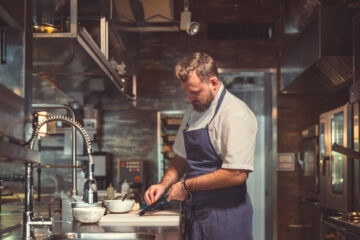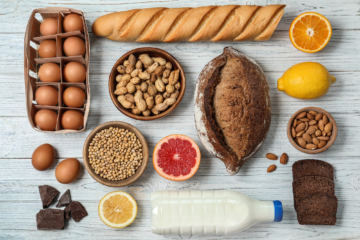You wowed your family and friends with an amazing holiday recipe. Time to make it a high school cooking class recipe.
Why not adapt that dish to a classroom lesson plan to show your students your passion — and have some fun?
If your holiday dish had you salivating and inspired all in one, use these steps to determine how to scale up an at-home recipe for your next culinary student lesson.
1. Make the Recipe Classroom-Appropriate

Complicated dishes with lots of exotic ingredients may not be a practical cooking class recipe. Ideally, you want your students to learn a recipe they can recreate at home, or at work, for years to come. If the recipe you’re thinking about requires a trip to a specialty food store and includes pricey ingredients, you may want to choose something more accessible.
There are ways to evolve a recipe into one that’s both student- and budget-friendly. Spoon University suggests swapping expensive ingredients for less expensive/more convenient substitutions, like:
- Cream cheese for goat cheese
- Porcini mushrooms for truffles
- Turmeric and paprika for saffron
- Pure vanilla extract for vanilla beans
- Flat iron steak for filet mignon
- Bananas or mayonnaise for eggs
If your recipe calls for pricier ingredients like olives, imported cheese and bacon, feel free to go easy on them in the classroom. Potent ingredients like those pack a lot of flavor, even in small quantities.
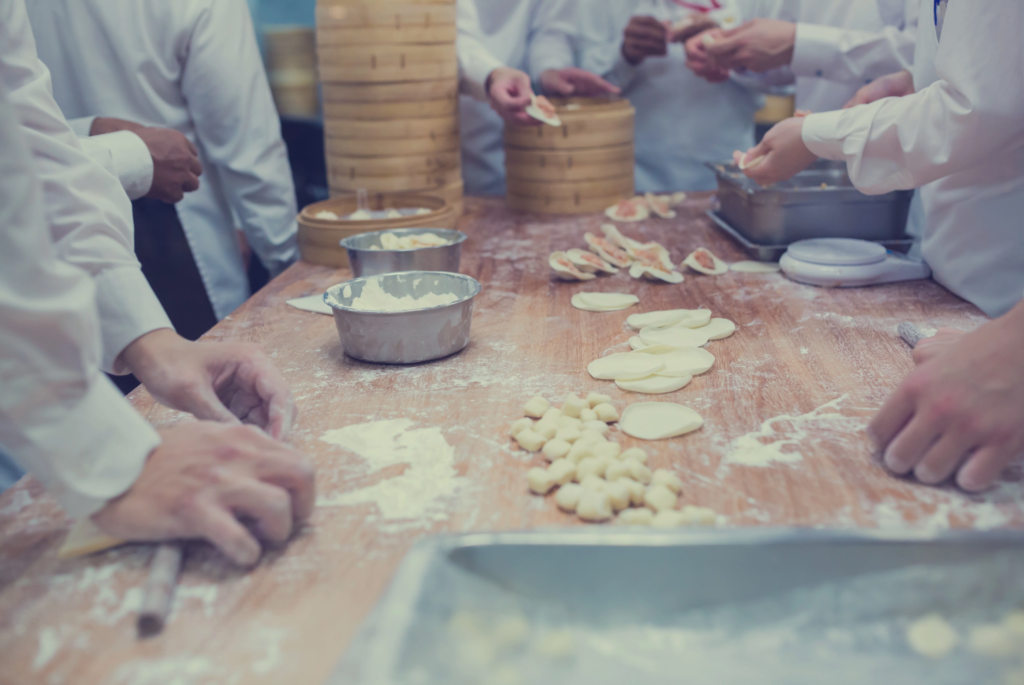
When you’re explaining ingredients to students, this is a good time to go over the average operating costs for a restaurant, and how significant ingredient costs can be. You may have some students who aspire to own a restaurant someday, so this can be a good way to squeeze a discussion around financing and budgeting into your cooking class.
You’ll also want a recipe with a prep and cook time that fits into your cooking class schedule, and simple enough for your students to grasp. Especially for high school cooking class recipes, you might search on a website like Minimalist Baker, where all recipes require 10 ingredients or less, 1 bowl or 30 minutes or less to prepare. Seeing what’s listed on a minimalist recipe site like that can give you an idea of how to adapt yours for the classroom.
2. Organize Your Recipe Based on Individual or Group Cooking
Determine how your students will be preparing and making the recipe. Will it be solo, in pairs or in groups?
You may not want every student or group in your cooking class to make a full four-to-six serving recipe. Creating a full meal’s portion size for the recipe may be impractical for the classroom. Determine whether it’s more practical to put a bigger team on a normal recipe or to divide your recipe into smaller ingredient sizes per individual/pair/group.
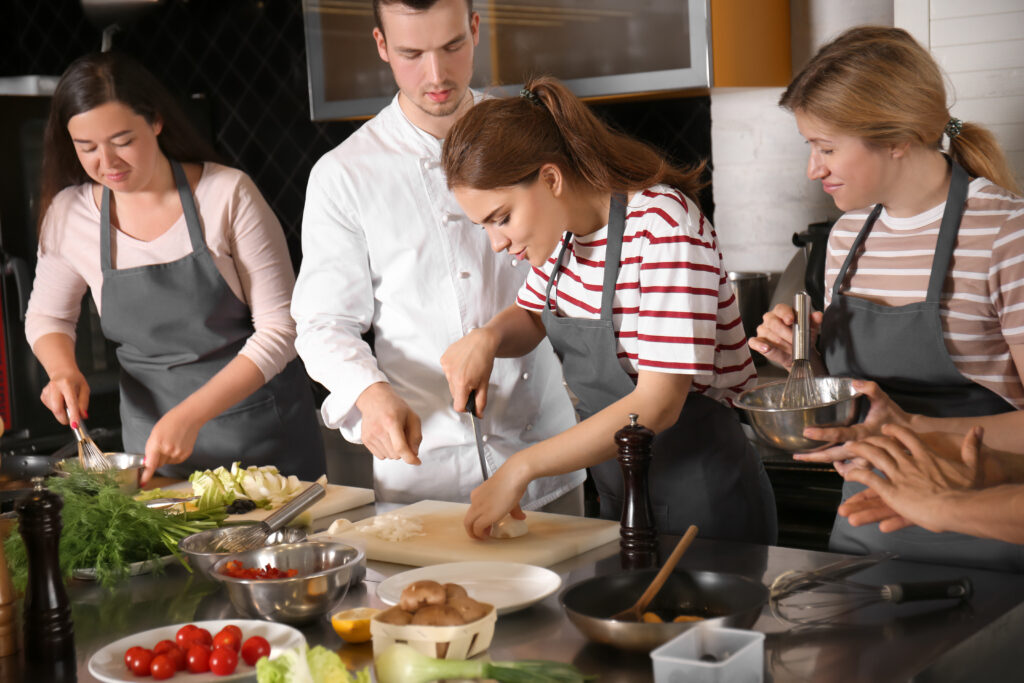
If you can, adjust recipe serving sizes so each student can take a sample of the finished recipe home. This way, they can show their loved ones what they’ve learned and have them taste their work.
Divide the recipe into tasks, if you plan on having pairs or groups prepare and cook the recipe. You might assign certain students to chopping up vegetables, others to tasks like separating eggs and others for measuring dry ingredients. Remind students about the principles they’ve learned in restaurant food safety certification as they’re preparing and cooking recipes.
To save time when cooking, prep what you can without taking away from the students’ cooking experience. For example, preheat the oven or get water on the stove for boiling before students enter the classroom. You may consider steaming or partially cooking dense vegetables like potatoes beforehand so they take less time for students to cook, as well.
Print out recipe sheets for every student so they stay on task as they’re cooking. It also provides a note-taking surface, in case some of your more adventurous students have ideas for tweaking the recipe or adding their own personal flair in the future.
3. Give All Students a Chance to Master Important Tasks
If the recipe gives your students an opportunity to practice a useful kitchen or life skill, try to organize the tasks so that all students can take part.
For example, if you want students to learn about the importance of precise measurement, make sure each student has the opportunity to measure something. If students are using different forms of measurement (measuring cups versus spoons versus a scale, for example), have the other students observe the measurement process.
Another example is knife skills. If the recipe calls for slicing several types of vegetables, you might have each student in a group slice one of every type of vegetable. Or if knife skills are applied to a variety of ingredients, you can use the observation technique.
4. Look Beyond the Food
Every recipe provides you with an opportunity to teach students more than how to cook a specific type of food. The recipe has cultural roots, which means you can weave in geography knowledge and lessons regarding traditional uses for foods. You can teach science by explaining how certain ingredients are grown and harvested. Math skills are used by measuring ingredients and counting up quantities. You can always explain nutrition by pointing out the health benefits of certain ingredients.
Before you introduce a recipe into the classroom, talk with other teachers about what the students are learning in other classes. You can look for academic connections to make as you’re teaching the recipe.
5. Empower Students to Keep Cooking
Create take-home recipe cards for students, so they can continue to practice the recipe at home. If you used money-saving swaps, include that information on the card, along with all the ingredients and tools that are required. Avoid abbreviations. Write the recipe in straightforward, clear language.
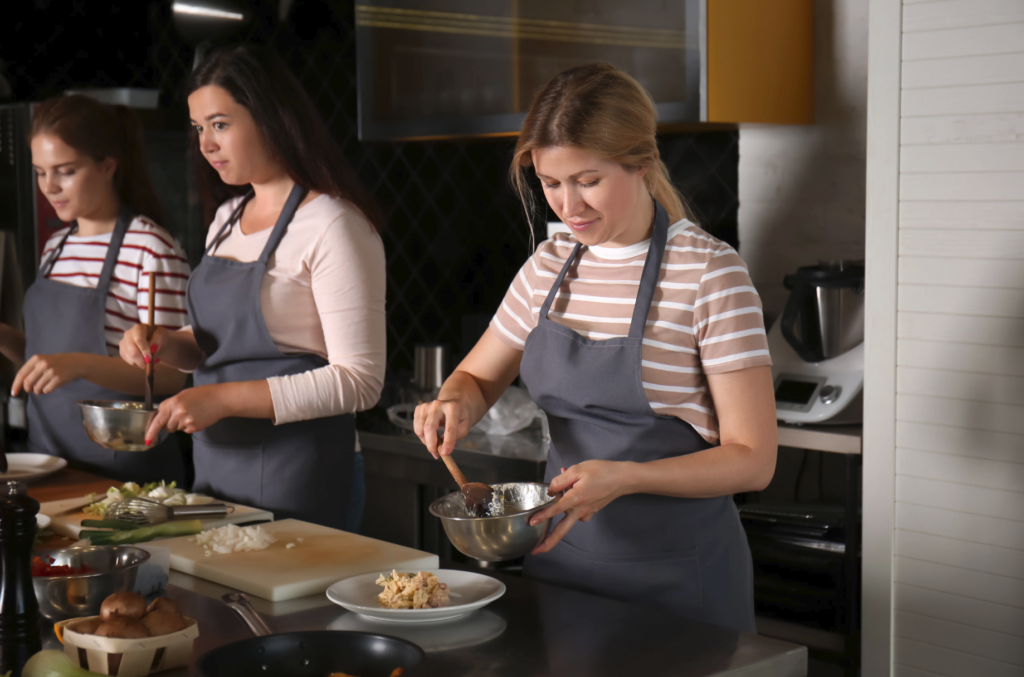
Add illustrations or photos of the food to the recipe card, so students have a visual reminder of what to aspire to. If you practiced kitchen skills or taught interesting facts related to the recipe, that information can go on the recipe card, too.
You might consider setting up an online portal for students to access recipes they’ve cooked, for students who want to use a tablet in the kitchen or who want to go back and research recipes. If you put recipes online, include a comments section, so students can contribute tips and modifications they’ve made to inspire other students.
If you used fresh vegetables or herbs in the recipe, consider setting up an herb or vegetable garden at school for students to manage. Now that they’ve had a taste of that herb or veggie, they might be eager to try other recipes using those ingredients.
Get an A+ in Food Safety for Your Classroom
Learning how to cook is often one of the most fun things students can learn in school, from middle school to high school and beyond. Make sure the meals they cook are not only delicious, but safe and healthy, by keeping all your students up-to-date on food safety certifications.
Make sure you and your students know how to properly prepare and store all these new ingredients by earning or renewing your (and your staff’s/students’) food handlers card and food managers card. Visit eFoodHandlers for affordable school food handlers solutions.
